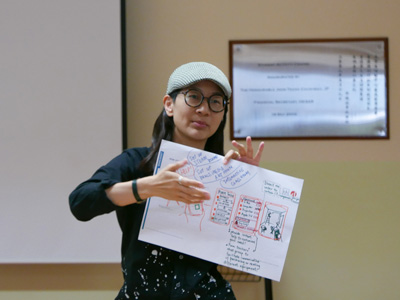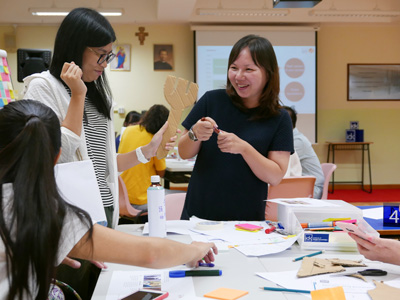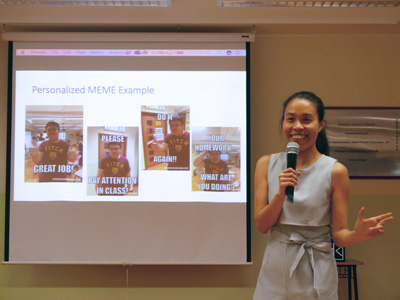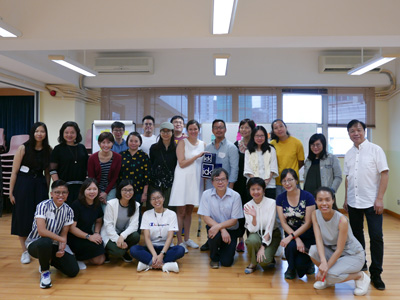Fostering Innovation in Schools: IDK Design Thinking Workshop for Teachers
How do we instil creativity in the education sector? How can design thinking help teachers overcome challenges in school? Our Institute of Design Knowledge (IDK) co-organised a workshop in collaboration with Chief Executive’s Award for Teaching Excellence Teachers’ Association (CEATETA) to equip teachers with the necessary design thinking skills to step up their teaching.
“It is great to have the opportunity to work with teachers across subject areas from the CEATETA network,” said Professor Eric Yim, Chairman of Hong Kong Design Centre. “Pilot methodologies and a creative framework will be developed in time to enhance students’ learning and unleash their creativity potential.”
The two-day activity covered the whole creative problem-solving process from discovering issues, defining the crux, developing potential ideas, to delivering solutions, as illustrated in the Double Diamond framework for design thinking. Participants shared the challenges they faced in school and bounced ideas off each other to create pedagogical innovations in a fruitful prototyping session.
The workshop was attended by 20 teachers from 14 secondary schools and 2 universities, who highly rated the workshop for its inspiring and engaging activities. The teachers come from diverse backgrounds and subject areas: while a few teach arts subjects, many of them teach mainstream subjects such as maths or even student development. They all agreed that design thinking can play a huge role in the pursuit of teaching and education excellence. “The Lotus Blossom ideation method is especially useful for us. It forces us to think deeply and see the possibilities in the cracks. I would recommend this design thinking workshop to every school,” said one participant.
Many participants believe that the Generation Z students today can be better engaged with digitalised learning. To motivate students with their most familiar tools, a group came up with the idea of FeedMe, an open-source web platform for promoting teacher-student interaction. Through a facebook-style platform, teachers can give instant assignment feedback to individual students by posting pictures and videos, leaving voice messages, or even creating memes. Students can reply with a simple emoji or leave comments. “FeedMe reduces teachers’ workload by streamlining the communication process. We can share useful reference video hyperlinks and select from a list of frequently used comments in the ‘Comment Bank’,” explained Ms. Man, a biology teacher and one of the masterminds of the platform. “Our goal is to boost students’ learning motivation with the help of multimedia resources.”
Another group of teachers shared the painstaking experience of refurbishing classrooms into art rooms or multimedia labs. They came up with an app idea called ROOMTAILOR - an Airbnb or Skyscanner type of matching system for configuring classroom equipment and improving students’ learning environments. “Teachers can select the room use, class size, required equipment, tech device specs and budget. The app will take care of the sourcing and procurement process by connecting teachers with suppliers or tech specialists,” said Ms. Fok, a visual arts teacher. “It lightens the burden of administrative chores on teachers, so we can spare more time for students.”
“Design thinking is a problem-solving mindset, where we use empathy to co-create solutions from different user perspectives,” said Dr. Edmund Lee, Executive Director of Hong Kong Design Centre. “We hope to motivate policy makers, school management and teachers to apply the tools to create more positive changes in their workplaces and for students.”



